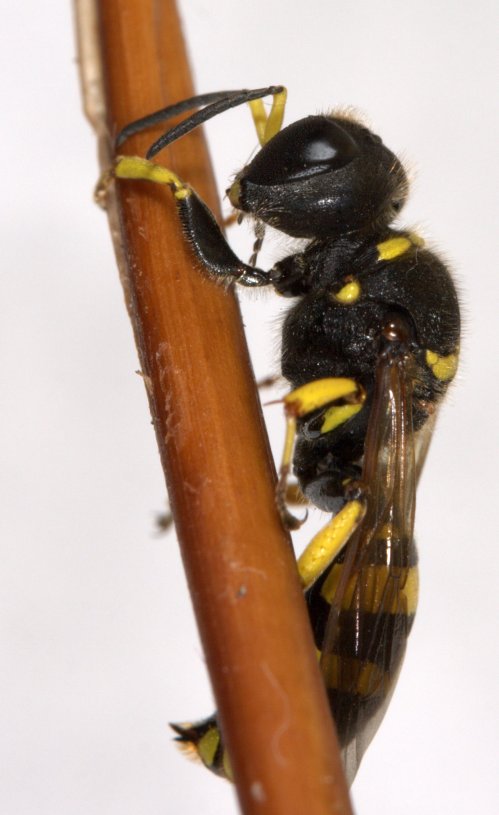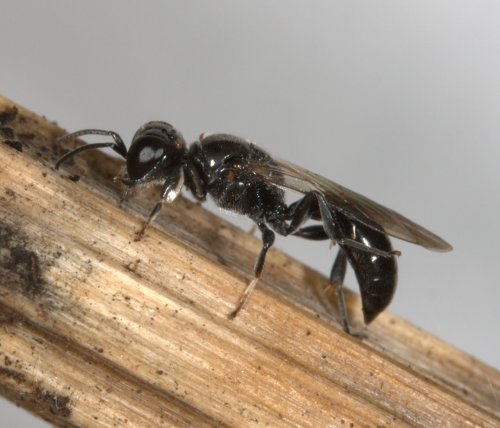Insects underpin all terrestrial habitats, but it’s often difficult to know exactly what things they need to thrive. Often, the habitats these animals need to survive are completely overlooked or demolished by us. Back in the day this wasn’t really a problem as there was lots of habitat to go around, but now, as the pressure on land becomes more intense what wildlife remains is squeezed into smaller and smaller areas. Understanding what insects need is crucial in protecting biodiversity.
Take this old stump as a case in point. The tree, a beech, has long since died, but it is only after it was on the way out that it has become really useful to wildlife. The dead tree is on a wide ride in Hatfield Forest (Essex) and by chance it happens to be orientated so that it is in full sunlight for much of the day. In this warm microclimate this old dead stump has become a hot-bed of insect activity.
In a few minutes during August of 2010 the solitary wasps below were all found to be nesting in the dead beech, making use of the holes and tunnels left by beetles that had been feeding on the rotting wood. These wasps are all predatory and they scout the surrounding vegetation for their prey, ranging from small flies to caterpillars, depending on the species of wasp in question.
This old, dead, stump tucked away in the corner of a small forest in Essex would not strike many people as pristine wildlife habitat, but the number of species living on it and in it is mind-boggling. It’s all about making space for nature, even tiny spaces of seemingly insignificant habitat.

A female Ectemnius continuus. Sphecids in this genus stock their nests with small flies (Ross Piper).

A male Ectemnius cavifrons. It's generally female sphecids that do all the work, so this one was probably loitering around looking for a mate (Ross Piper).
-

A female Crossocerus annulipes. These small sphecids also stock their nest with small flies (Ross Piper).

A female Nitela borealis. This is a tiny sphecid (about 5mm long). Not much is known anout this species, but it probably stocks its nest with small hemiptera (Ross Piper)

An Ancistrocerus nigricornis. These vespid wasps stock their nest with small caterpillars (Ross Piper).

Parasitizing the nest of the Ancistrocerus wasp above was this fairly large ichneumon (Ephialtes manifestator). The photo below shows this wasp pupating in the host's nest (Ross Piper).

Here is the Ancistrocerus nigricornis nest and to the left you can see the pupating ichneumon, Ephialtes manifestator (photo above). In the middle and to the right are the developing Ancistrocerus pupae. You can see how the female builds the nest by laying an egg, stocking it with prey (all now eaten) and sealing the chamber to build another one (Ross Piper).



Leave a comment